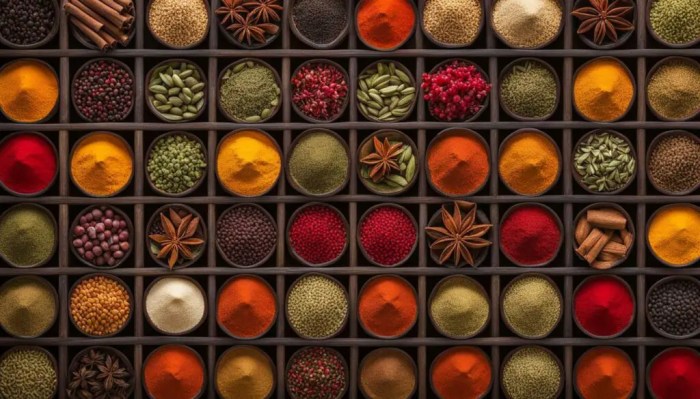20 easy and delicious beet recipes for you try home! Dive into a vibrant world of culinary possibilities with these simple-to-prepare beet dishes. From earthy roasted roots to refreshing salads, this guide explores the versatility of beets in both savory and sweet creations. We’ll cover everything from basic preparation methods to creative flavor pairings and stunning plating techniques. Get ready to add a pop of color and nutrition to your kitchen repertoire!
This comprehensive guide will take you through the journey of beet exploration, revealing the hidden depths of this nutritious root vegetable. Discover how to prepare beets quickly and easily, unlocking their delicious potential in various dishes. We’ll provide 20 unique recipes, with detailed instructions, nutritional information, and even dietary considerations. You’ll learn how to enhance the natural earthy flavors of beets with complementary ingredients and create visually stunning dishes.
Plus, we’ll share tips on storage and preservation, so you can enjoy beets all year round!
Introduction to Beets

Beets, those vibrant root vegetables, are more than just a pretty addition to your plate. Packed with nutrients, they offer a surprising versatility in the kitchen. From their earthy flavor to their diverse culinary applications, beets are a valuable addition to any healthy diet. Their deep crimson hue is not just for show; it’s a sign of potent antioxidants and essential vitamins.Beets are a fantastic source of vitamins, minerals, and dietary fiber.
Their nutritional profile is rich, including folate, manganese, potassium, and various B vitamins. This makes them a beneficial addition to any diet, whether enjoyed as a side dish, a vibrant part of a salad, or incorporated into a hearty stew. Their nutritional value makes them a good choice for vegetarians and vegans seeking a plant-based source of essential nutrients.
Beet Varieties
Various beet varieties exist, each with unique characteristics. These differences extend to color, size, and flavor profiles. Some varieties are sweeter than others, and their texture can vary from tender to slightly firm.
- Red beets are the most common variety, known for their deep crimson color and robust flavor. They are a popular choice for salads and roasted dishes.
- Golden beets have a more delicate flavor and a vibrant golden hue. They are often used in salads or soups, where their color adds a beautiful touch.
- White beets are less common, but they offer a unique, mild flavor and a crisp texture. They are frequently used in salads or as a component of various vegetable dishes.
Preparation Methods, 20 easy and delicious beet recipes for you try home
Beets can be prepared in numerous ways, each bringing out a different aspect of their flavor and texture. Whether you prefer them raw, roasted, boiled, or pickled, there’s a method to suit your taste.
- Raw: Beets can be grated or thinly sliced and enjoyed raw in salads. Their slightly sweet and earthy flavor pairs well with other fresh ingredients. Raw beets can be added to vegetable platters or salads with a light vinaigrette or a lemon-herb dressing. Their crisp texture adds a refreshing element.
- Roasted: Roasting beets enhances their sweetness and brings out their natural flavors. Roasted beets can be a delightful side dish or incorporated into hearty salads. Roasting creates a caramelized exterior and tender interior.
- Boiled: Boiling beets is a simple way to cook them. This method preserves their nutrients and makes them easy to peel and use in various dishes. Boiled beets are often used in salads or soups.
Culinary Uses and History
Beets have a long history and cultural significance, particularly in Europe. They have been cultivated for centuries, and their use in various cuisines has evolved over time.
Looking for 20 easy and delicious beet recipes to try at home? Well, sometimes the most unexpected places can lead us to discover our passions. Just like discovering a hidden treasure in the garden, you might find an unexpected and effective way to find your true calling by exploring the culinary world. Perhaps, through experimenting with different beet recipes, you’ll uncover a hidden talent for cooking, a passion for nutrition, or a love for sharing delicious food with others.
These 20 easy and delicious beet recipes are a great starting point for anyone wanting to delve deeper into the culinary world, an unexpected and effective way to find your true calling or not. Let’s get cooking!
Beets have been cultivated for thousands of years and are believed to have originated in the Mediterranean region.
- Beets are commonly used in salads, soups, and side dishes. Their versatile nature allows for many culinary applications.
- Their vibrant color and distinctive flavor profile make them a popular ingredient in many cuisines.
Beet Varieties Table
| Beet Variety | Color | Typical Use |
|---|---|---|
| Red Beet | Deep Crimson | Salads, roasted dishes, soups |
| Golden Beet | Golden Yellow | Salads, soups, vegetable dishes |
| White Beet | White | Salads, vegetable dishes |
Easy Beet Preparation Methods

Beets, a nutritional powerhouse, are incredibly versatile in the kitchen. However, their earthy flavor and sometimes tough texture can be intimidating for beginners. This section provides straightforward methods to prepare beets quickly and easily, ensuring optimal flavor and texture for your culinary creations. We’ll explore boiling, steaming, and roasting techniques, along with different peeling methods to make the process smoother and more enjoyable.Quick and efficient methods for preparing beets are essential for maximizing flavor and minimizing effort.
The following sections detail techniques to achieve perfect beets with minimal cooking time, while preserving their rich nutrients and vibrant color.
Boiling Beets
Boiling is a common and straightforward method for cooking beets. It’s a relatively quick process, ideal for preparing beets for salads, soups, or as a side dish. This method allows for even cooking and a tender texture.
- Prepare the beets: Wash the beets thoroughly under cool water. Trim the tops and any damaged areas.
- Fill a pot: Fill a large pot with enough cold water to completely cover the beets. Add a pinch of salt to the water; this enhances the flavor and prevents the beets from sticking to the pot.
- Bring to a boil: Bring the water to a rolling boil over high heat.
- Add beets: Gently place the beets into the boiling water.
- Reduce heat: Reduce the heat to a simmer and cook for 30-45 minutes, or until a fork easily pierces the beets.
- Cool and peel: Remove the beets from the pot and immediately transfer them to an ice bath. This stops the cooking process and makes peeling much easier.
- Peel the beets: Once the beets are cool enough to handle, peel off the skin. The skin should slip off easily due to the ice bath.
Steaming Beets
Steaming is another effective method for cooking beets, resulting in a tender texture while retaining more nutrients compared to boiling.
Roasting Beets
Roasting beets brings out their natural sweetness and creates a slightly caramelized flavor. This method is ideal for adding depth to dishes and for creating a rustic presentation.
Looking for some easy and delicious beet recipes to try at home? I’ve got 20 fantastic options for you! While you’re browsing those recipes, consider downloading some of the best price comparison apps, like the ones listed in this article: 30 best price comparison apps you need download now. They can help you find the best deals on ingredients for your beet dishes, saving you money for all those delicious recipes.
So get cooking!
Peeling Beets
Peeling beets can be a tricky process, but a few tricks can make it much easier. The key is to stop the cooking process quickly to allow the skin to slip off.
Comparison of Beet Preparation Methods
| Method | Cooking Time (approx.) | Effort Level | Texture | Flavor |
|---|---|---|---|---|
| Boiling | 30-45 minutes | Medium | Tender | Mild |
| Steaming | 45-60 minutes | Medium | Tender | Slightly less intense than boiling |
| Roasting | 45-60 minutes | Medium | Tender with a slightly crispy exterior | Sweet and caramelized |
Delicious Beet Flavors and Combinations
Beets, often overlooked, offer a surprisingly versatile palette of flavors that can elevate any dish. Their earthy sweetness can be balanced and enhanced by a variety of complementary ingredients, creating a delightful culinary experience. Beyond their nutritional value, beets add a unique depth and complexity to both savory and sweet dishes, opening up a world of culinary possibilities.Beets, with their distinctive earthy undertones, pair exceptionally well with ingredients that offer contrasting flavors and textures.
This ability to complement other tastes allows for a wide range of culinary creations, from simple salads to sophisticated main courses. The key to unlocking the full potential of beets lies in understanding how to balance their unique flavor profile with other ingredients.
Complementary Flavors and Ingredients
Beets’ earthy sweetness often works beautifully with bright, acidic elements. Vinegar, citrus fruits, and herbs like dill and parsley provide a refreshing contrast. The sweetness of beets can also be highlighted by pairing them with nuts, seeds, and cheeses. These pairings create a harmonious blend of flavors, textures, and aromas.
Culinary Applications of Beets
Beets are a common ingredient in many cuisines worldwide. In Middle Eastern cuisine, beets are often incorporated into salads and stews, highlighting their sweet and savory qualities. German cuisine frequently uses beets in dishes like beetroot soup and salads. Russian borscht, a traditional soup, features beets as a cornerstone ingredient, showcasing their ability to add depth and complexity to savory preparations.
Savory and Sweet Applications
Beets can be seamlessly integrated into both savory and sweet dishes. In savory dishes, they can be roasted, boiled, or pickled, offering a wide range of textures and flavors. In sweet dishes, beets can be incorporated into desserts, jams, and baked goods, where their subtle sweetness complements other ingredients. This versatility makes beets a valuable addition to any culinary repertoire.
Balancing the Earthy Flavor
The earthy flavor of beets can be effectively balanced by contrasting flavors and textures. Acidity from citrus fruits, vinegar, or yogurt can cut through the earthiness, while the sweetness of apples, pears, or other fruits can enhance the overall flavor profile. Adding herbs like mint or dill can further refine the balance, adding fresh notes that complement the natural sweetness of beets.
Unique Beet Flavor Pairings
- Beets with Citrus and Herbs: A vibrant salad featuring roasted beets, segments of grapefruit, and fresh dill creates a refreshing and flavorful dish. The citrus provides a bright acidity that cuts through the earthy sweetness of the beets, while the dill adds a delicate herbal note. This pairing is a perfect example of balancing contrasting flavors.
- Beets with Creamy Goat Cheese and Walnuts: This combination is a perfect example of how beets can be incorporated into sophisticated dishes. The creamy texture of goat cheese provides a delightful contrast to the earthy beets, while the crunch of walnuts adds a satisfying textural element. The walnuts’ subtle nuttiness complements the beets’ natural sweetness.
- Beets with Balsamic Glaze and Candied Walnuts: This pairing offers a unique blend of sweetness, acidity, and texture. The rich balsamic glaze adds depth and complexity, while the candied walnuts provide a delightful crunch. This combination is perfect for adding a touch of sophistication to salads or as a side dish.
- Beets with Smoked Paprika and Feta: This pairing showcases the versatility of beets in savory dishes. The smoky paprika adds depth and warmth, while the salty feta provides a contrasting flavor. The combination of textures is also noteworthy, with the smooth beets contrasting with the salty and crumbly feta.
- Beets with Honey and Pistachios: A surprisingly delightful combination, beets with honey and pistachios is an example of how beets can work well in sweet dishes. The honey adds a touch of sweetness that complements the earthy notes of the beets, while the pistachios provide a satisfying crunch and a subtle nutty flavor. This pairing is perfect for a healthy and flavorful dessert.
20 Easy and Delicious Beet Recipes
Beets, a vibrant root vegetable, are packed with nutrients and offer a delicious versatility in the kitchen. These 20 recipes showcase how easy and enjoyable it is to incorporate beets into your meals, from simple sides to hearty main courses. From roasted perfection to refreshing salads, these recipes are designed to tantalize your taste buds while providing a healthy boost.
Beet Recipe Collection
This collection features a variety of beet recipes catering to different tastes and dietary needs. Each recipe is carefully crafted to highlight the unique flavor and nutritional benefits of beets. From simple preparation methods to elaborate dishes, these recipes are designed for both novice and experienced cooks.
20 Beet Recipes
- Roasted Beet & Goat Cheese Salad: A delightful combination of roasted beets, creamy goat cheese, and a vibrant mix of greens. This salad is a light and flavorful way to enjoy beets.
- Ingredients: Roasted beets, crumbled goat cheese, mixed greens, toasted walnuts, balsamic vinaigrette.
- Instructions: Roast beets until tender. Combine with greens, goat cheese, walnuts, and vinaigrette.
- Nutritional Information (per serving): Approximately 350 calories, high in Vitamin C, folate, and potassium.
- Beet and Orange Soup: A creamy and flavorful soup featuring the earthy sweetness of beets and the zesty tang of oranges.
- Ingredients: Beets, oranges, vegetable broth, onion, garlic, ginger.
- Instructions: Sauté onion, garlic, and ginger. Add beets, oranges, and broth. Simmer until beets are tender. Blend until smooth.
- Nutritional Information (per serving): Approximately 280 calories, high in Vitamin A, Vitamin C, and potassium.
These are just a few examples of the variety of beet recipes available. The following list provides a more comprehensive collection.
- Beet & Feta Dip
- Beet Burgers
- Beet & Walnut Salad
- Beet & Chickpea Curry
- Beet & Spinach Frittata
- Beet & Apple Relish
- Beet & Dill Pesto Pasta
- Beet & Carrot Stir-fry
- Beet & Quinoa Bowl
- Beet & Black Bean Tacos
- Beet & Goat Cheese Stuffed Dates
- Beet & Dill Soup
- Beet & Lemon Dressing
- Beet & Parmesan Crostini
- Beet & Dill Fries
- Beet & Apple Muffins
- Beet & Ginger Smoothie
- Beet & Sweet Potato Hash
- Beet & Walnut Sandwiches
- Beet & Cream Cheese Spread
Recipe Categorization
| Category | Recipe |
|---|---|
| Salads | Roasted Beet & Goat Cheese Salad, Beet & Walnut Salad |
| Soups | Beet & Orange Soup, Beet & Dill Soup |
| Main Courses | Beet Burgers, Beet & Chickpea Curry, Beet & Spinach Frittata |
| Sides | Beet & Apple Relish, Beet & Carrot Stir-fry |
| Snacks/Appetizers | Beet & Feta Dip, Beet & Parmesan Crostini |
| Desserts | Beet & Apple Muffins |
| Other | Beet & Quinoa Bowl, Beet & Black Bean Tacos, Beet & Goat Cheese Stuffed Dates, Beet & Dill Fries, Beet & Lemon Dressing, Beet & Walnut Sandwiches, Beet & Cream Cheese Spread, Beet & Ginger Smoothie, Beet & Sweet Potato Hash |
Visual Appeal and Presentation
A delicious beet dish is more than just the sum of its ingredients; it’s an experience for the eyes as well as the palate. Visual appeal plays a crucial role in enhancing the overall enjoyment of a meal. A beautifully presented dish can elevate the taste experience and leave a lasting impression on the diner.A well-plated beet dish, whether a simple salad or a complex main course, can be a work of art.
Careful consideration of color, texture, and arrangement can transform a good meal into a truly memorable one. The right garnishes and plating techniques can significantly impact the visual impact of your beet dishes, turning them into conversation starters.
Importance of Visual Appeal
Visual appeal is critical for enhancing the dining experience. A visually appealing dish often sparks interest and encourages guests to try new flavors. The presentation is a crucial part of the overall impression and can make a dish more enticing. This is particularly true when introducing a new ingredient like beets, which may have an unfamiliar aesthetic.
Garnishes and Plating Techniques
Using appropriate garnishes and plating techniques is key to making beet dishes visually appealing. Consider the color palette of the dish. Beets, with their deep red hues, pair well with greens, creamy yellows, or even contrasting colors like orange or white. This interplay of colors can create a visually striking presentation.For example, a simple beet salad can be dramatically enhanced by a sprinkle of toasted walnuts, a drizzle of balsamic glaze, or a scattering of fresh herbs like parsley or chives.
A vibrant array of colors and textures can transform a simple beet dish into a culinary masterpiece.
Attractive Ways to Plate Beet Recipes
The specific plating technique depends on the recipe. For a beet and goat cheese salad, arrange the beets in a circular pattern on a plate, drizzled with a balsamic vinaigrette. Place small, crumbled pieces of goat cheese around the beets and garnish with fresh mint leaves. For a beet and quinoa bowl, arrange the quinoa in a bed on the plate.
Top with sliced beets and a drizzle of tahini dressing. Garnish with chopped walnuts and fresh parsley.
Creative Garnishes and Color Combinations
Beet dishes can be visually striking using simple garnishes and color combinations. For a beet and orange salad, use orange slices as a garnish to complement the vibrant red beets. A sprinkle of toasted sesame seeds adds a subtle nutty flavor and visual interest. Pairing beets with a light vinaigrette and a touch of fresh dill creates a fresh, vibrant dish.
Ever wanted to whip up 20 easy and delicious beet recipes? It’s surprisingly simple! Speaking of simple, have you ever wondered what it’s like to be a saxophone player? I’m curious about the unique perspectives of those who master the saxophone, and this article dives into 10 things only saxophone players would understand. 10 things only saxophone players would understand Regardless, these 20 beet recipes are bound to be a hit at your next dinner party!
A sprinkle of pomegranate seeds adds a pop of color and a delightful contrast in texture.
Sample Table of Beet Recipes
| Recipe Name | Image Description | Suggested Garnishes |
|---|---|---|
| Roasted Beet and Goat Cheese Salad | Roasted beets arranged in a circular pattern on a plate, with crumbled goat cheese scattered around the beets. | Fresh mint leaves, balsamic glaze, toasted walnuts |
| Beet and Quinoa Bowl | Quinoa arranged in a bed on a plate, topped with sliced beets and a drizzle of tahini dressing. | Chopped walnuts, fresh parsley, pomegranate seeds |
| Beet and Orange Salad | Beets and orange slices arranged together, drizzled with a light vinaigrette. | Toasted sesame seeds, fresh dill |
| Beet and Feta Dip | A vibrant beet dip garnished with crumbled feta cheese and fresh dill. | Fresh dill, crumbled feta, olive oil drizzle |
Dietary Considerations and Substitutions: 20 Easy And Delicious Beet Recipes For You Try Home
Beets are a versatile ingredient that can be easily incorporated into a variety of diets. Understanding dietary considerations and substitutions is key to ensuring everyone can enjoy these delicious root vegetables. This section will delve into various dietary needs and provide practical solutions for adapting beet recipes.Dietary needs can range from vegetarian and vegan requirements to gluten-free and other allergies.
By understanding the potential substitutions and modifications, you can adapt your beet recipes to meet specific dietary needs without sacrificing flavor or nutritional value.
Vegetarian and Vegan Considerations
Many beet recipes are already naturally vegetarian and vegan-friendly, as beets themselves are plant-based. However, some recipes may contain ingredients that are not vegetarian or vegan, such as dairy or honey. Careful consideration of ingredients is essential to ensure compliance with these dietary requirements. For instance, a creamy beet dip might use sour cream, which is not vegan.
Substituting coconut cream or cashew cream can create a similar texture and flavor profile while remaining vegan-friendly.
Gluten-Free Modifications
Gluten-free diets often require careful attention to ingredient sourcing, as many sauces, dressings, and gravies may contain gluten. Be mindful of any ingredients in your beet recipes that might contain gluten. For example, some salad dressings or marinades can contain gluten. Using gluten-free alternatives for these ingredients will ensure your recipes are suitable for those with gluten sensitivities.
Ingredient Substitutions for Specific Dietary Needs
A key aspect of adapting recipes is understanding suitable substitutions for ingredients. A good rule of thumb is to look for ingredients with similar nutritional profiles and textures. For example, if a recipe calls for honey, maple syrup or agave can be used as substitutes.
- For recipes that contain dairy, consider using plant-based milk alternatives like almond milk, soy milk, or oat milk. These alternatives offer similar creaminess and can be used in soups, sauces, or dips.
- If a recipe calls for wheat flour, gluten-free flours like rice flour or almond flour can be used as substitutes. Keep in mind that the texture and baking results may differ slightly.
- When a recipe includes honey, consider using maple syrup or agave nectar as a substitute. These sweeteners offer similar sweetness and can be used in baked goods, dressings, or marinades.
Table of Common Dietary Restrictions and Suitable Recipe Adjustments
The following table Artikels common dietary restrictions and suggests suitable recipe adjustments for the beet recipes. This table can help in creating adaptable recipes that suit various dietary needs.
| Dietary Restriction | Recipe Adjustment |
|---|---|
| Vegetarian | Ensure all ingredients are plant-based. |
| Vegan | Substitute dairy-based ingredients with plant-based alternatives. |
| Gluten-Free | Use gluten-free alternatives for flour, breading, and sauces. |
| Nut Allergy | Substitute nuts with nut-free alternatives, such as sunflower seeds or pumpkin seeds. |
| Dairy Allergy | Substitute dairy-based ingredients with dairy-free alternatives. |
Tips for Beet Storage and Preservation
Beets, with their vibrant color and earthy flavor, are a fantastic addition to any kitchen. Knowing how to properly store and preserve them ensures you can enjoy their deliciousness throughout the year, whether fresh or in a variety of preparations. This section dives into the best practices for maximizing the lifespan of your beets.Proper storage and preservation methods are crucial for maintaining the quality and flavor of beets.
By understanding these techniques, you can enjoy the versatility of beets for longer periods, making them a staple in your kitchen.
Best Methods for Storing Beets
Fresh beets, when stored correctly, can maintain their freshness for several weeks. Proper storage conditions help retain their crispness, color, and flavor. For optimal freshness, beets should be stored in a cool, dark, and dry place.
- Refrigeration is the most common and effective method. Wrap the beets individually in a damp paper towel and place them in a perforated plastic bag or a container in the crisper drawer of your refrigerator. This helps to maintain moisture and prevent them from drying out.
- A cool, dark pantry or cellar can also be used if you have such a space available. Beets can also be stored in the vegetable crisper drawer for a short period. Avoid direct sunlight or extreme temperatures, which can lead to spoilage.
- For long-term storage, a root cellar is ideal. The cool, stable temperature and humidity of a root cellar allow beets to maintain their quality for several months.
Preserving Beets for Future Use
Preserving beets allows you to enjoy them throughout the year, even during off-seasons. Several methods are available for preserving beets for later use, including freezing and canning.
- Freezing: Freezing beets is a simple and effective method for preserving their flavor and nutrients. A common practice is to blanch the beets before freezing. This process involves briefly submerging the beets in boiling water to stop enzymatic activity and maintain color. Blanching helps to prevent discoloration and maintain a more appealing texture after thawing. The following flow chart Artikels the steps involved in freezing beets.
- Wash and scrub the beets thoroughly.
- Boil water in a large pot.
- Add the beets to the boiling water and blanch for 3-5 minutes.
- Immediately transfer the beets to an ice bath to stop the cooking process.
- Peel and chop the cooled beets.
- Arrange the chopped beets on a baking sheet lined with parchment paper.
- Freeze the beets in a single layer for a few hours.
- Once frozen, transfer the beets to freezer bags or containers and label them.
- Canning: Canning beets requires careful attention to sanitation and safety protocols. Proper canning methods preserve the quality of the beets for extended storage. This method ensures the beets remain safe and edible for months.
Selecting Fresh Beets
Choosing fresh beets is essential for enjoying their best flavor and texture. Look for beets that have firm, unblemished skin and a deep, vibrant color.
- Firmness: A firm beet indicates freshness and good quality. Avoid beets that feel soft or mushy.
- Color: The color of the beet skin should be a deep red, indicating ripeness. Look for beets with even color distribution, without spots or bruises.
- Appearance: Inspect the beet for any signs of damage or decay. Avoid beets with cracks, cuts, or soft spots.
Shelf Life of Beets
The shelf life of beets depends on the storage method and the condition of the beets. Fresh, properly stored beets can last for several weeks in the refrigerator. Frozen beets maintain their quality for several months, while canned beets have an even longer shelf life.
End of Discussion
Embark on a delicious beet adventure! This comprehensive guide provides everything you need to know about beets, from preparation to presentation. With 20 mouthwatering recipes, you’ll discover the versatility of beets in countless dishes. Whether you’re a seasoned cook or a beginner, these recipes are designed to be easy to follow and incredibly satisfying. So, grab your beets and get ready to enjoy the vibrant flavors and textures of these nutritious roots!










